Contents
When you’re looking for a helmet for your motorcycle, there’s a lot more to think about than just what looks cool (although that may be very important to you, too!) A helmet is primarily a piece of safety gear, not a fashion accessory, and the right one could save your life in an accident.
There are six main types of motorcycle helmets that this article will explain, so you can decide which is right for you:
- Full-face
- Modular (flip-up)
- Open face (3/4 helmet)
- Half helmet (‘brain bucket’)
- Off-road (motocross helmet)
- Dual sport (crossover, hybrid, enduro, adventure)
Let’s take a detailed look at each kind of helmet:
Types of Motorcycle Helmets
Full-face
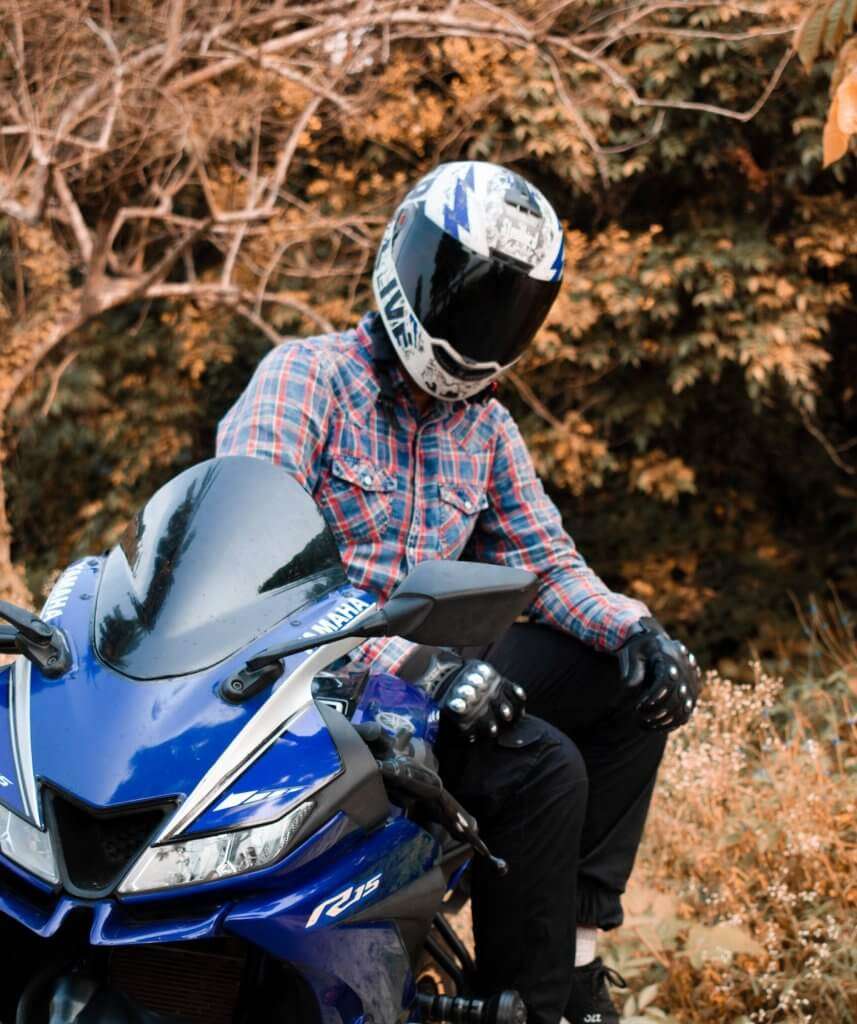
This is likely what you imagine when you think about a motorcycle helmet. Full face helmets cover the top, back, and front of your head – everything but your eye area, because of course, you need to see! One of the main advantages of full-face helmets over open face and half helmets is the chin bar – since 45% of helmet impacts occur in this area, you’ll want to be very sure that a full-face helmet isn’t right for you before going with a different, less protective option.
There’s a lot to consider with full-face helmets. If you’re a sport rider or need a race helmet, you want a helmet that works when you’re hunched over – this means the chin bar will be higher, the eye-port will be angled towards the top of the helmet, and the aerodynamics will be precisely tuned to stop the helmet from ‘lifting’ at high speeds.
If you’re a tourer, cruiser, or adventure rider, your full-face helmet should have a slighter lower chin bar, the eye-port should be angled straight out, and you can expect some add-ons for comfort and soundproofing: think mp3 capabilities, Bluetooth, rider-to-rider communications, and more.
The downside to a full-face helmet? Ventilation! Although most helmet manufacturers will include ventilation ports, when you have the visor closed, you’re basically in a sealed bubble – and that’s no good when you literally have a bee in your bonnet!
If you live and ride somewhere hot, look for a helmet with plenty of ventilation, moisture-wicking fabrics, and, if possible, removable and machine-washable padding so you don’t have to stick your face in a well of your old sweat. That said, if you live somewhere cold, the lack of ventilation with a full-face helmet may be a benefit – it will help keep you warmer when the temperature drops.
You’ll also have to consider the whole visor issue. If you’re in the sun a lot, the UV eye protection rating will matter. Wherever you are, you should pay attention to visor colors – mirrored or dark-colored visors will protect you from glare if you ride mostly in bright conditions, while rose or yellow-colored visors will help you see better in areas with a lot of cloud cover.
Clear visors are for night riders, while ‘blackout’ visors look cool but aren’t particularly safe – you’ll learn that the first time you ride into a tunnel and can’t see where the walls are!
One more visor issue worth discussing is fogging. Anti-fogging visors are a good, but not perfect, solution. A helmet with a built-in breath box to direct your breath away from the visor is a step up. Another step ahead is a visor compatible with a pin lock system, which essentially creates a double-layered barrier to prevent visor fogging.
Modular (flip-up)
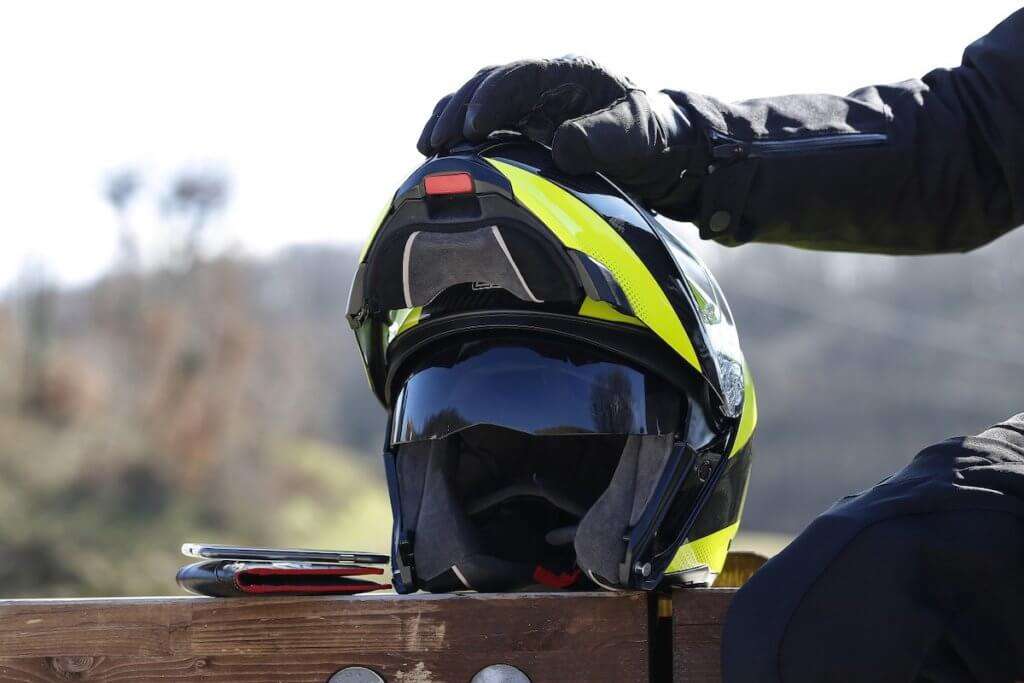
The ‘Transformers’ of motorcycle helmets, these have a chin bar that flips up (or can be removed entirely), turning a full face helmet into an open face helmet practically instantly – perfect if you want to take regular breaks for a meal, a smoke, or a good old conversation. Just flip up the chin bar to remove the face shield without taking the top section off – it’s a versatile option popular with sports touring and adventure riders.
The downside? Modular helmets are not nearly as safe as full-face helmets. The hinge that allows for the ‘flip-up’ freedom also compromises the safety of the helmet, making the outer shell weaker overall.
And if you ride with the face open? That’s neither aerodynamic or safe – and it kind of makes you look like a giant nerd, too.
That said, modular helmets are generally safer than open face or half helmets, which we come to next.
Open face (3/4) helmets
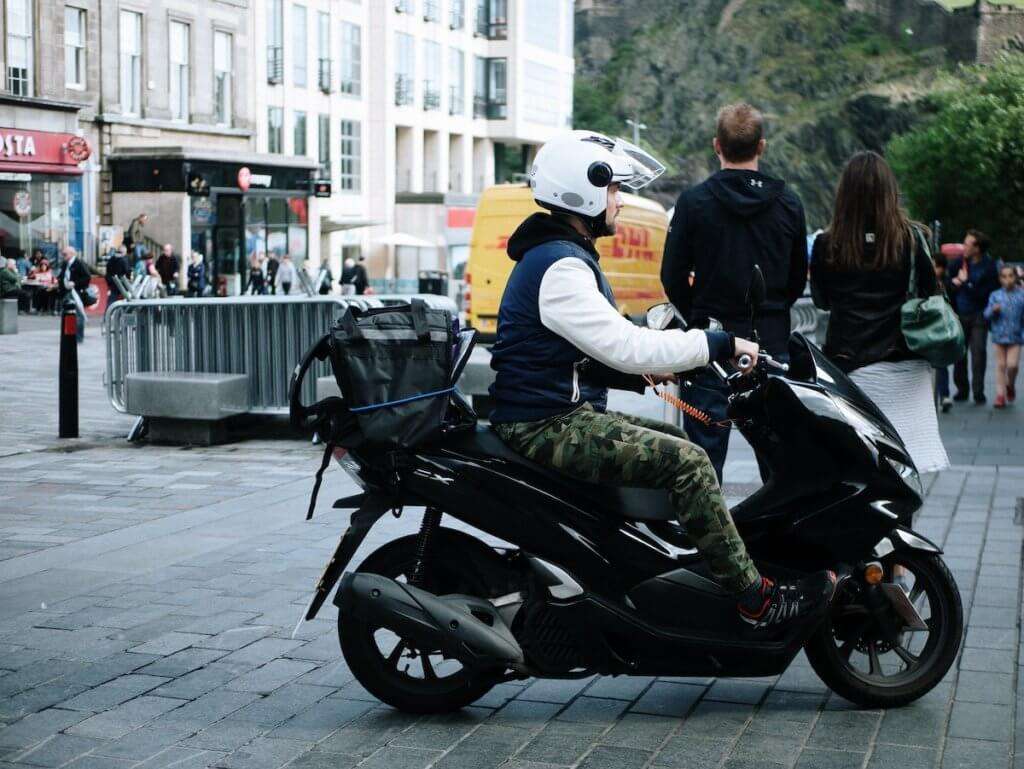
Open face helmets are most popular with cruisers and scooter riders. These helmets have a vintage look, and they match well with the kind of bikes riders love for short commutes around the city.
In terms of safety, an open face helmet will do its job well where it covers the head – i.e., the top, back, and sides, but not your face. The lack of a chin bar (and often a face shield) means these helmets provide less coverage and less protection in an accident.
Other than style, the main benefit of these helmets is the ventilation and airy feel – although this can be a problem on rainy days or in dusty conditions or smog. Even if your helmet has a flip-down visor, you may want to rock a bandanna to help you breathe clean air. If your helmet has no visor, sunglasses may do the trick in good weather, but most riders will opt for goggles; also, many manufacturers offer snap-on eye protection custom-designed to work with their helmets.
Half helmets (brain buckets)

These are as minimalist as motorcycle helmets get. They cover just your head, generally from your hairline to about halfway down the back of your head, but nothing else; unsurprisingly, they’re popular with the ‘tough guys’ who ride Harleys or ‘naked bikes’ like the Ducati Monsters or Kawasaki Z1000s.
Unfortunately, they generally provide only the bare minimum legal coverage required by the United States Department of Transportation, and they severely lack essential safety features – even on the top of the head (which is covered), their impact resistance is often subpar.
So why does anyone wear them? Because they capture that image of freedom many motorcyclists live for, and the airflow and lightness make for a pleasant ride – as long as you don’t ever have a spill. My advice would be to leave the half-helmets to the most experienced riders; even after adding sunglasses, goggles, or a bandana, they’re just not safe enough to protect you from a traumatic brain injury in a crash.
Off-road (motocross helmet)

These are specialty helmets for people who love dirt riding; you can tell them from regular helmets by their prominent chin bars and sun peaks. Since dirt bike riding is mostly a summer sport, most helmets will also be designed for maximum comfort by minimizing weight and maximizing ventilation.
These helmets usually don’t have visors, since they’re designed to be used with goggles; goggles provide much better airflow and unlike visors, can be quickly replaced if they get too covered in dirt and mud. The sun peak is there to protect your eyes from the sun.
If you want to hit the streets with an off-road helmet? Not a great idea. They tend to have minimal soundproofing, so at high speeds, the traffic and wind noise can be overwhelming. Plus, that sun peak will try to launch your head into the sky like a kite if you ride too fast – best to keep these helmets for dirt riding and adventuring away in the backwoods, not on main streets (and definitely not on the highway!)
Dual sport (crossover, hybrid, enduro, adventure)
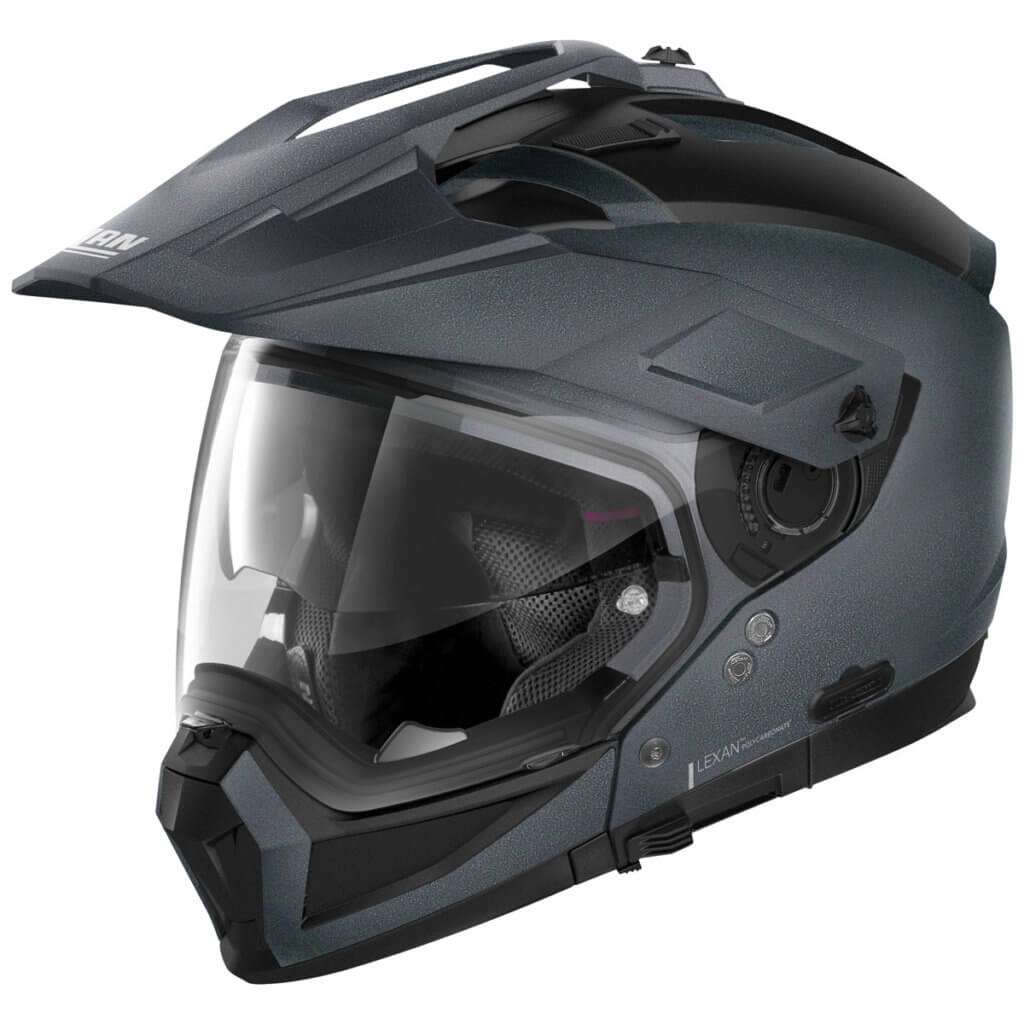
Dual-sport helmets cover a lot of different styles; all fall somewhere between off-road and full-face designs. Most have a sun peak and great ventilation like off-road/motocross helmets, but they also provide more warmth and soundproofing for riding on the road like full-face helmets, and most have a built-in visor and chin bar.
The key thing to know is that these helmets are all about flexibility. They’re ventilated almost as well as a pure off-road helmet, and they’re soundproofed almost as well as a full-face helmet.
The sun peaks aren’t so prominent, to resist lifting at high speeds, and the visors usually flip-up to allow you to wear goggles instead if you want/need to while off-road – these helmets are all about versatility. If you plan to do about as much off-road biking as on-road, they’re a no-brainer.
Conclusion
As with any gear decisions, you need to think about your bike, what type of riding you use it for (and when, and how often, and in what weather), and what safety precautions are essential before you decide on a helmet style. If you’re into both highway cruising and off-road dirt biking, you may need two helmets (or a well-designed dual sport) to meet your unique needs.
As much as you may want to look like a badass while you’re on your bike, always put safety first, then fashion – the great thing is that there are so many designs available now, there is a myriad of stylish options for basically every type of helmet out there.
There’s no need to choose between style and safety – aim to protect your brain (it’s pretty important!) with the best-suited type of helmet for your needs first, then look for the most stylish options in that category before making your pick. You might also want to look for sales or helmet styles that are just about to be replaced by a slightly different new model – you can find great helmet offers online this way.
Always read reviews and try to buy from a retailer that accepts returns if your first choice just isn’t right (not all helmets fit all head shapes, and you may need to try a few before finding the perfect helmet size) – you need to be comfortable wearing a helmet to keep your focus while you’re riding, and a helmet that just doesn’t fit right or constantly needs adjusting is a safety hazard.
With the perfect helmet, you’ll be able to focus on your ride without any distractions; that’s what you should be aiming for. Hopefully, this guide has helped you narrow down the field!

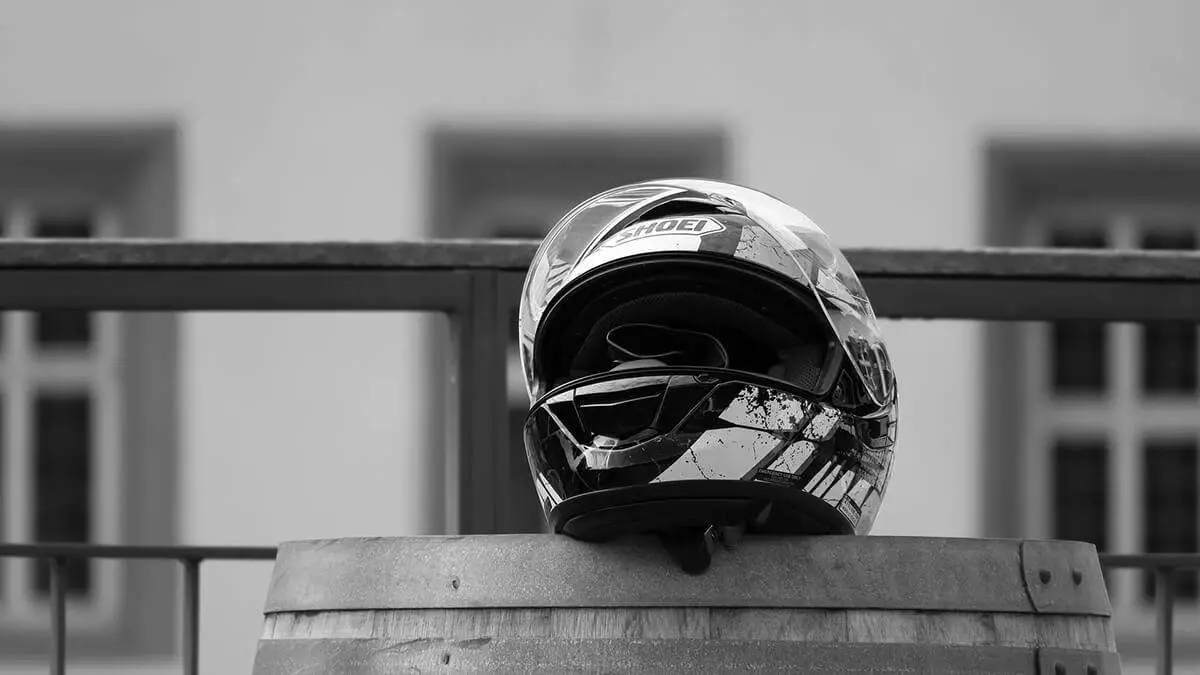
 How to Pick the Best Motorcycle Helmet
How to Pick the Best Motorcycle Helmet  The 5 Best Full-Face Motorcycle Helmets With Bluetooth
The 5 Best Full-Face Motorcycle Helmets With Bluetooth  Can you Wear a Snowmobile Helmet on a Motorcycle?
Can you Wear a Snowmobile Helmet on a Motorcycle?  Ultimate Guide To The Best Motorcycle Riding Gear For Beginners
Ultimate Guide To The Best Motorcycle Riding Gear For Beginners